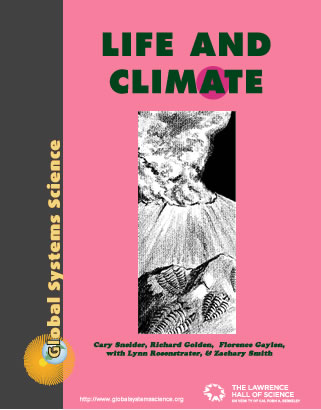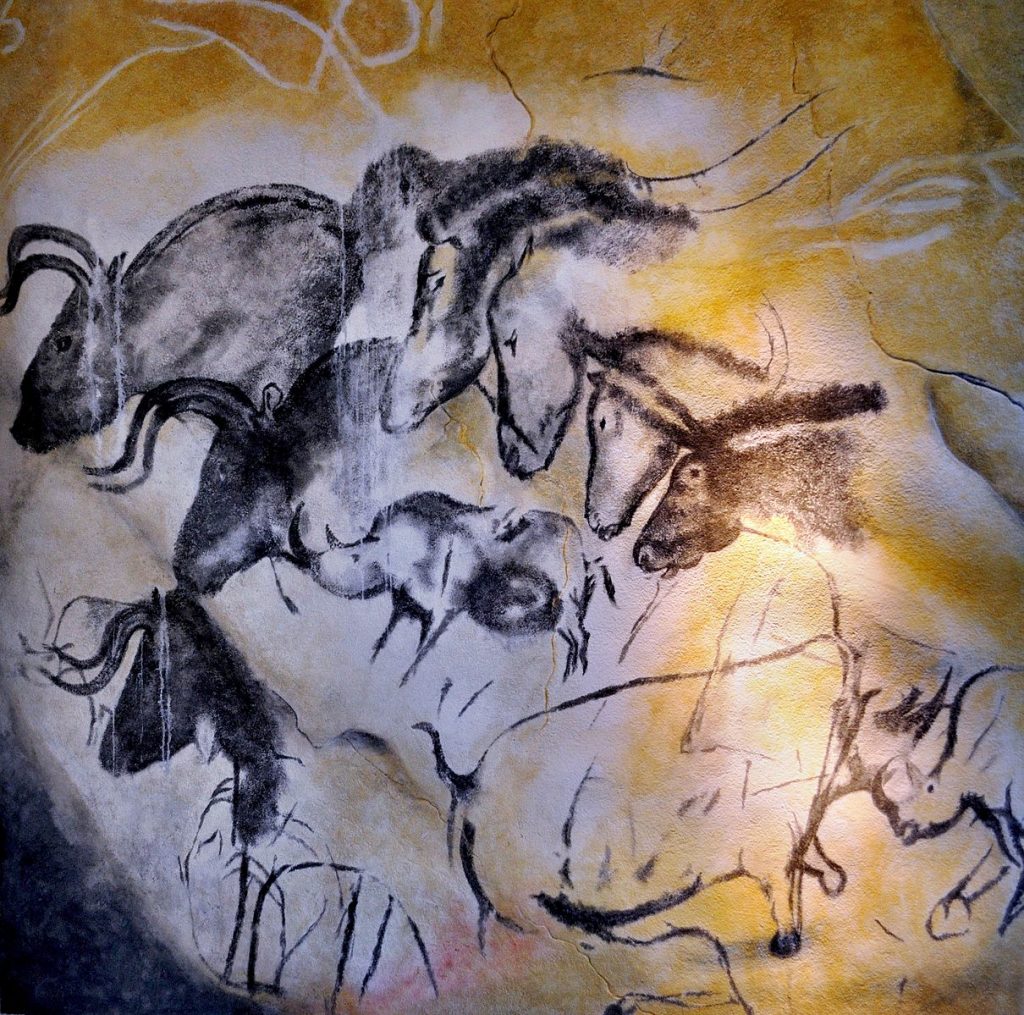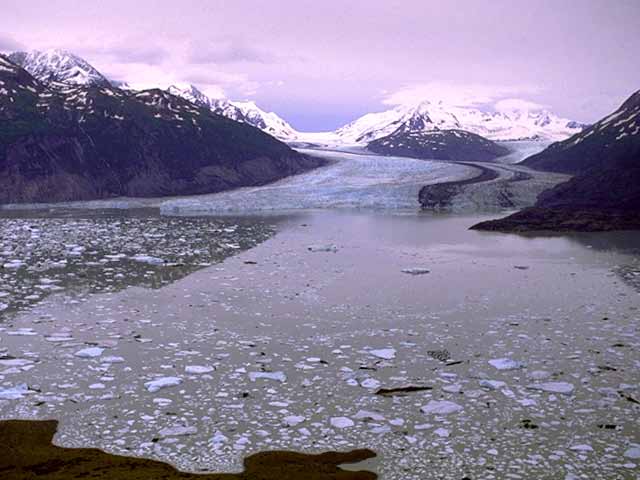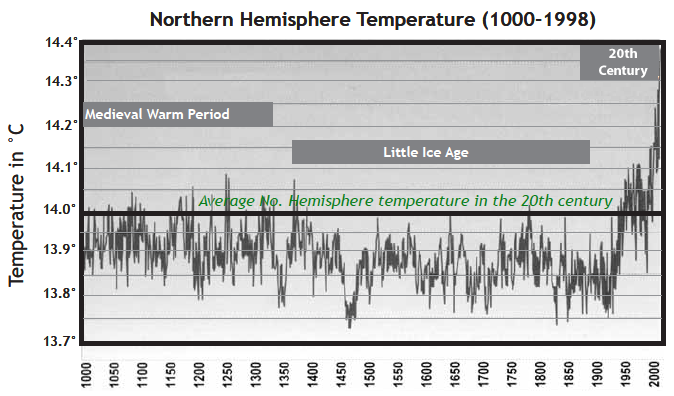LC12. Climate and Culture

Chapter 12
I. New Ways of Living and Thinking

Photo by Thomas T. via Wikimedia Commons
Although anatomically modern human beings had evolved by 100,000 years ago, there is little evidence that they lived and behaved differently from Homo erectus. However, evidence shows that major changes were beginning to get under way about 50,000 years ago. This development took place in the midst of the last ice age.
The first signs of advances are seen in the construction of stone implements. They were produced in a variety of forms clearly made for specific use in hunting, cutting, scraping, and piercing animal and plant materials. These implements had sharper edges, smoother surfaces, and better overall design than earlier tools.
Another major development of this period was in eating customs. Earlier peoples had subsisted by scavenging, hunting small animals, and gathering fruits, seeds, berries, and the roots of plants. With the inventions of better hunting tools—stone blades and finely made spear points—food and clothing sources for humans greatly expanded. The woolly mammoth, bears, wild cattle, foxes, wolves, deer, and many other animals—all were hunted as food, and in colder areas, for their warm fur to wear.
The remains of large animal bones at various sites suggest that people must have worked together to kill and transport the animals. Hunting big game requires planning; it is a team effort. From the sizes of archeological sites we know that people lived in larger groups than before. Where food was plentiful, the groups tended to stay in one place. Where food was less available, they planned their food-gathering movements to take advantage of animal migrations, as well as the ripening of plants.
Archeological finds show that people were making objects such as small sculptures, beads, and pendants starting about 35,000 years ago. The people who made these items were not simply thinking of the next meal; these objects reflect an interest in ideas that we associate today with the production of art.
Dated to about 20,000 years ago, numerous examples of innovations in toolmaking, art work, items of personal adornment, and in burial practices were found in sites in Europe, Asia, Australia, and Africa. In addition to working with stone, toolmakers skillfully crafted a variety of tools from ivory, bone, antlers, and shell to use in sewing and hunting. The new materials were also used to make jewelry—lots of which were found in elaborate burial sites.
Perhaps the most spectacular evidence of artistic expression during this period are images on cave walls in France and Spain. Literally hundreds of paintings show us glimpses of that distant world as interpreted by our ancestors. Some of the most magnificent depictions are on the walls of Chauvet Cave in southern France. Only recently discovered, this cave has extraordinary charcoal and ocher drawings of lions, rhinoceroses, and other animals then found in Europe. The artists’ keen observation skills and artistic abilities are clearly evident. These images were made 32,000 years ago.
II. Language and Culture
Clearly, humans had entered a new era. What can account for the changes? No one knows for certain. Understanding how humans came to be the complex creatures that we are is one of the great challenges of paleoanthropology. It is very likely that the development of language played a vital role. Language is a defining human quality.
Although animals communicate with one another by various means, only humans—as far as we know—have the capacity for language. Language includes not only the ability to speak but also the ability to think in terms of ideas. We have the capacity to form mental images and to reflect on things that are both real and imagined. It is quite possible that the development of language is responsible for the great advances that started about 50,000 years ago—a development that transformed our ancestors into what we would recognize today as human.
The distinction between human beings of the past 50,000 years and those who came before is not a physical difference. It is in the development of rich and complex cultures that included cave paintings, sculptured figures, jewelry, and elaborate burial practices. While we cannot look into the minds of our ancestors of the past 50,000 years, evidence suggests that they were developing meaningful ideas about the world that may be similar to some of today’s concepts of art, religion, and philosophy.

LC. Investigation:
The Importance of Language
You’ll need to work with two or three other people for this activity. Consider this scenario: the scene is a meeting of a group of hungry Homo sapiens trying to figure out how to get food. What kinds of food are available? Where can they get it? What must be done? Who should do what? First, try to answer these questions without using language. You can use drawings, hand gestures and grunts, but no written or spoken words. Then, try it again with language. Afterward, write down your impressions of the difference that language makes for the survival of the group.
III. Expanding Settlements
Australia and New Guinea
Fifty thousand years ago, the sea level worldwide was much lower than it is now, because much of Earth’s water was in the form of ice. As a result of the low sea level, many islands that make up present-day Indonesia were connected to Southeast Asia. However, Australia and New Guinea (connected to each other because of the low sea level) were separated from Southeast Asia by water.
Evidence shows that early human populations had moved from Africa into Asia, and then into Southeast Asia—land masses that were connected. Yet, there is also evidence of human settlement in Australia and New Guinea as early as 50,000 years ago. These early explorers may have been the ancestors of today’s Aborigines. How did people get to Australia from Asia? Because of the lower sea level, the coastal area of Australia extended further out than it does today, making the distance between the mainland and Australia shorter than it is now. Nevertheless, migration could occur only over water. The route must have been managed in small, sea-worthy crafts—probably the first instances of shipbuilding.
Settling the Western Hemisphere
From 35,000 to 14,000 years ago, it was possible to walk from what is now eastern Siberia across the Bering Land Bridge to Alaska and northwestern Canada. At times during that cold period, the Bering Strait (only 50 miles wide) would have been a walkable passageway because of the low sea level. Though a number of artifacts (stone tools) have been found at several sites in Siberia, archeologists have reached no consensus regarding the dates of settlements there, nor do they agree on just when migration to the Western Hemisphere may have begun. Nevertheless, there is indisputable evidence that by 10,000 years ago humans were living in all of the Western Hemisphere. Even as far as Tierra del Fuego at the southern tip of South America there is evidence of human habitation from that time.
By the end of the last ice age, humans had moved into most of Earth’s land areas. In the Western Hemisphere, they found creatures of all kinds—bison, caribou, musk ox, mastodons, elephants, horses, camels, giant sloths, to name just a few of the larger animals. From fossils found in early archaeological sites, we know that human inhabitants hunted large game as well as smaller mammals for food. In addition, a wide variety of plants provided a renewable food source.
IV. Out of the Deep Freeze

Between 14,000 and 12,000 years ago, dramatic changes in climate occurred. Temperatures rose during this time, and more than one third of the glacial ice melted. With so much melting ice, the sea level rose and water covered vast coastal areas. Some islands were inundated. There was extensive flooding in much of North America as well. With the change in climate, weather patterns also changed; some regions became wetter and others drier.
All life forms were affected by the changing climate. A number of long-flourishing, cold-loving plants could not tolerate the warmer temperature and died, while other plants that favored the warmth or the wetness thrived.
Some animals, without their accustomed food source, became extinct during this period or shortly after. In northern Europe, grass-eating animals like the woolly mammoth, wild cattle, reindeer, and rhinoceros lived on a treeless plain covered with dense, small herblike plants. With the change in climate, the plain slowly became woodland, and the animals that were adapted to grassland either migrated or perished.
By 9,000 years ago, across the planet, many of the large mammals became extinct, including the mastodon, woolly mammoth, great buffalo, giant hartebeest, marsupials, giant horse, and giant ground sloth. Their predators also perished, including the saber-tooth tiger, American lion, and dire wolf. No one knows the full story of these extinctions. It is possible that the loss of food supplies alone caused the extinctions, or possibly the expansion of people into new territories resulted in over-hunting. In any case, it is clear that at the end of the last ice age, this change in climate resulted in a major change in the diversity and distribution of life on the planet.
V. The First Farmers
When the climate changed, some humans remained where they were, because food resources were adequate. Other groups, however, had to move and adapt to new resources. As had been their practice, humans hunted game and collected the nuts, berries, and ripened fruits of wild plants. Then, for the first time, some groups started to plant seeds to grow their food. They also selected animals to tame. In Southwest Asia, starting about 10,000 years ago, humans cultivated barley, wheat, peas, and lentils, and raised sheep, goats, and cattle for food. By 4,000 years ago, humans on every continent were selecting plants to grow and animals to domesticate.
Why did these practices arise? At first, some groups of humans living in more permanent settlements probably supplemented their foraging by saving seeds of wild plants and setting them in the ground near their homes. In time, with experience at planting and the production of better crops, people became dependent on “home-grown” foods. It would certainly seem that producing foods near home would be more efficient than foraging for wild plants that were sometimes far away. The same logic applies to domesticating animals. Why depend on the hunt and its dangers when some animals, like sheep, were tamable?
With the practice of agriculture and a stable, year-round food supply, some farming villages slowly grew into cities. Cities are not simply large villages; they are complex social structures. Not everyone in a city is needed to produce food. As a result, new opportunities could arise. Some individuals became tradesmen, soldiers, or civic leaders; others were artisans, artists, or builders. Each early civilization developed its own pattern of society, but all came about because in a fundamental way agriculture made those developments possible.
VI. The Greenland Story
Day-to-day changes in weather hide the long-term changes that occur in climate. The analyses of ice cores, described in previous chapters, confirm historical records that from about the ninth century until the twelfth century the climate in the Northern Hemisphere was warmer than in subsequent centuries. This interval of time is called the Medieval Warm Period.
During this period the Viking leader Eric the Red discovered a large island in the northern Atlantic Ocean. Although it was rocky and the interior an ice sheet, the island had some grassy coastal areas. Fish and game were plentiful. Eric named his discovery Greenland. When he returned to Iceland, where he had been living, he recruited fellow settlers. A fleet of 25 ships carrying men, women, and domesticated animals sailed for Greenland in the year 986. Due to severe storms, only 14 ships reached their destination.
Some colonists settled on the southeastern tip of land, while others went on to the western coastal area. The colonists raised a variety of animals, including pigs, sheep, goats, and cows. They also fished and hunted. Game animals, sea mammals, and even birds were plentiful. The colonists settled in and did well. Excavation of Eric the Red’s house showed that it was sturdily built of rocks and sod.
During the next two hundred years the colonies on Greenland grew to about 3,000 people, and prospered. The colonists had developed a thriving trade with the Norwegians who admired the furs and ivory walrus tusks from Greenland.
Starting about 1300 the climate began to cool. Although there were fluctuations in temperature, by 1400 the Little Ice Age was under way. As a result of the colder climate, the northern polar ice cap expanded and blocked sea lanes. The settlement on the western coast of Greenland became isolated, while travel from the eastern settlement to Iceland and Norway was hazardous. In addition to the harsher winters during the Little Ice Age, other conditions had made life difficult for the colonists. Competition in trade from other sources and a terrible plague had taken their toll. The last trading ship between Norway and Greenland sailed in 1369. By 1500, peoples of the Inuit culture, who had been slowly moving into the area, were the only inhabitants.


LC12.2. Investigation:
How Did the Native Greenlanders Survive?
Research how the native people of 14th Greenland survived in the colder climate, while the Viking people did not.
The colder climate of the fourteenth century contributed to the abandonment of Greenland by the Vikings, but the Kalaallit (native Greenlanders) survived, and continue to live there as did the Inuit across Northern Canada and Alaska. Find reference articles, books, and videos to learn about one of the cultural groups: the Kalaallit, Inuits, Aleuts, Yupiks. Can you form a hypothesis of why the Vikings perished but the Kalaallit did not? Do you think Kalaallit and Inuit cultures might be affected if global warming occurs?
VII. Conclusion
During much of the time period covered in this chapter—the past 50,000 years of human history—the climate was much colder than it is now. Anatomically modern humans had evolved by the start of the last ice age, but archeological data indicate that these humans had developed little more than crude stone implements. Later, people began to create finer tools and artistic works. Additionally, the development of language may have been important in spurring these and other intellectual advances.
No one knows for certain why human culture developed during this period. Perhaps the advance of the glaciers intensified competition, so that only the most advanced groups survived. Those who could not hunt effectively, who could not control fire, or who could not cooperate in teams did not survive to reproduce. At this point we can only speculate based on scanty evidence.
On the other hand, strong evidence exists that starting about 10,000 years ago, after the climate warmed and the ice caps shrank to their current extent, the human population increased and spread. At various places around the world agriculture developed. And with the development of agriculture came the growth of cities and the rise of complex civilizations.

